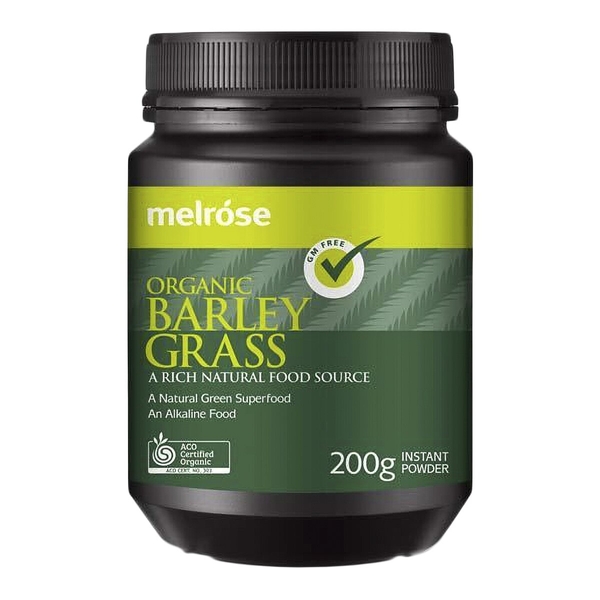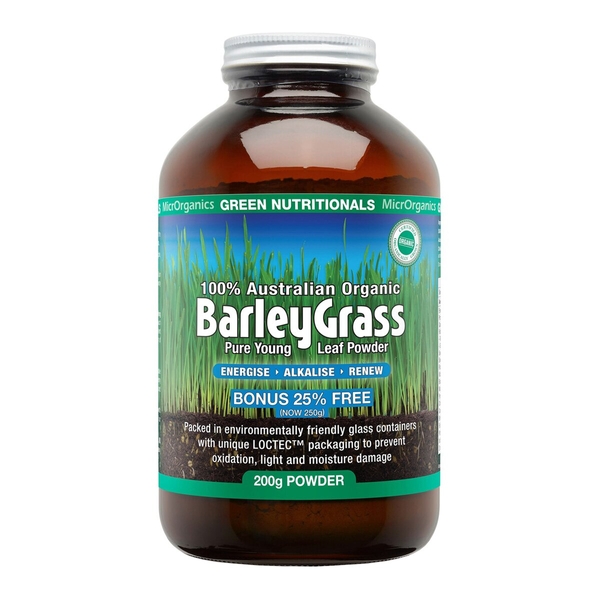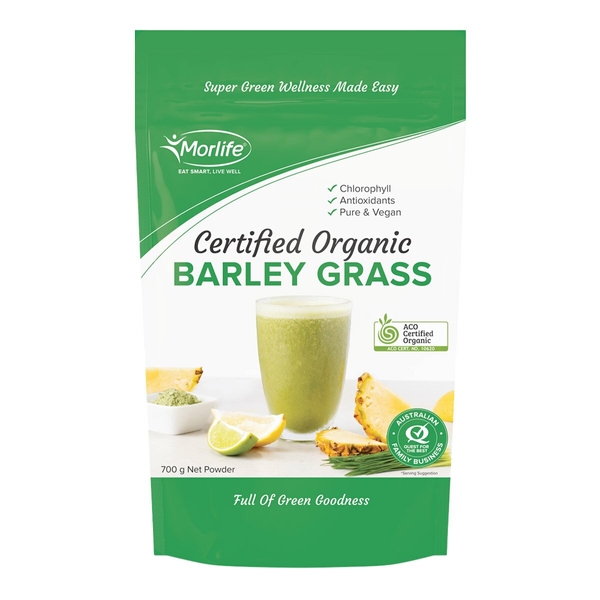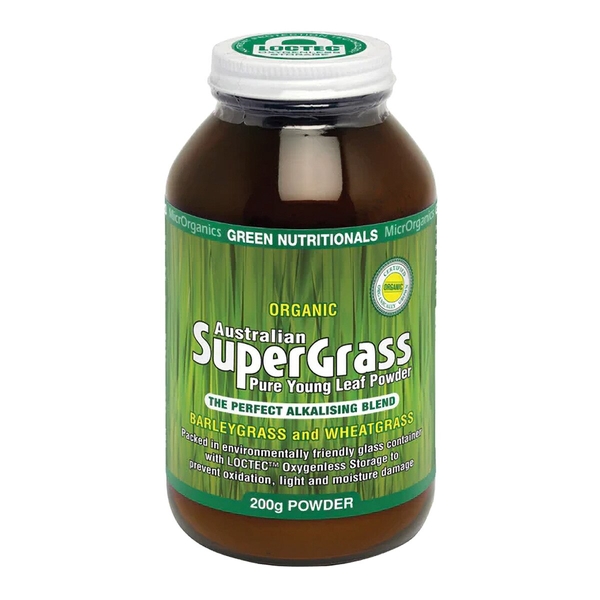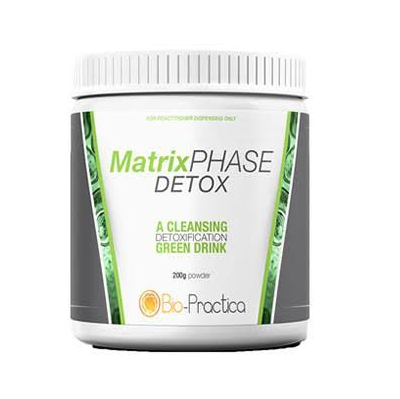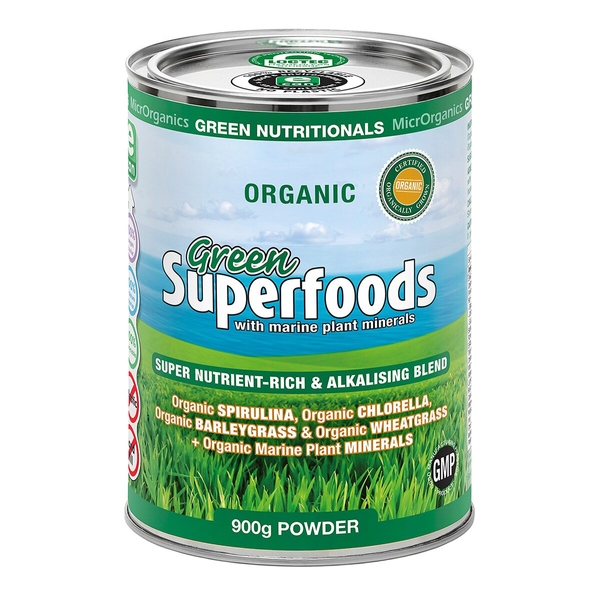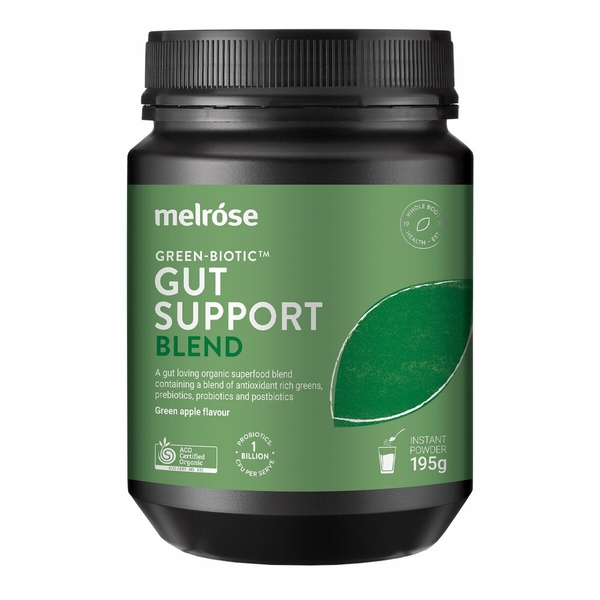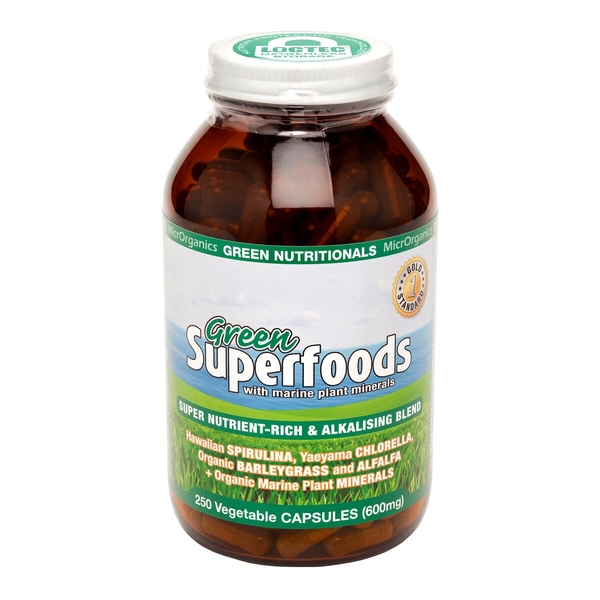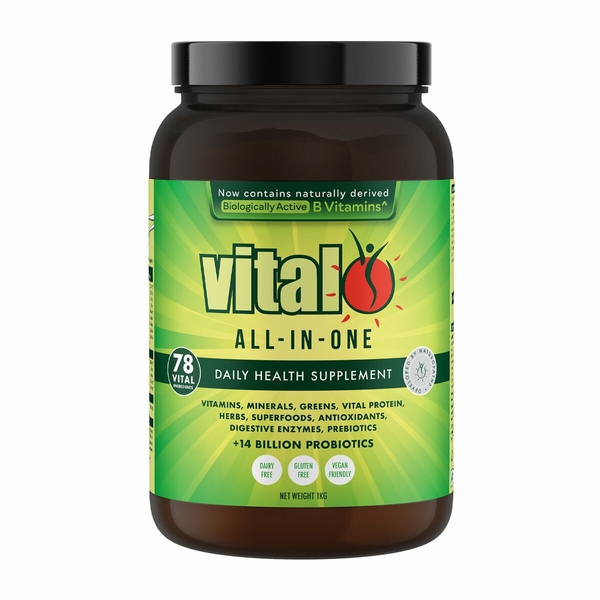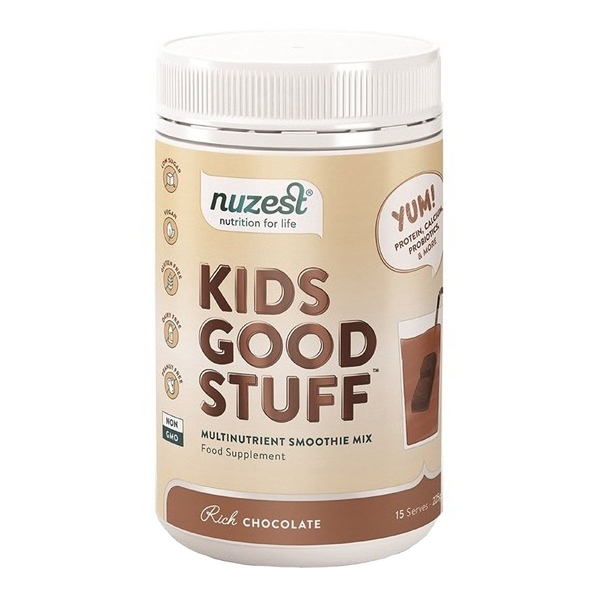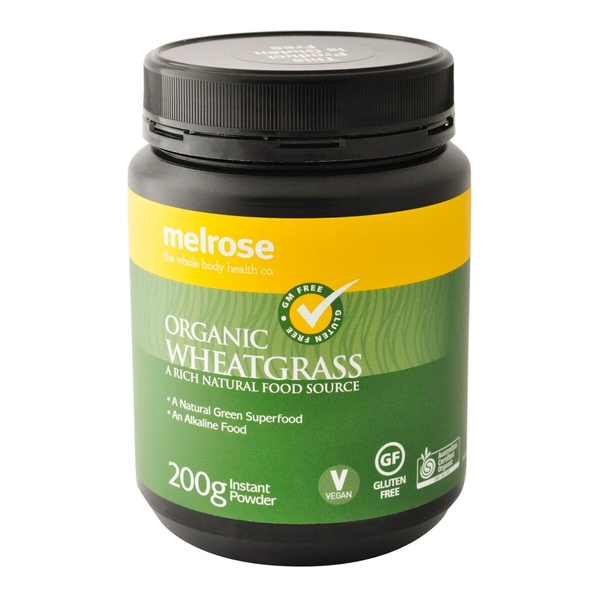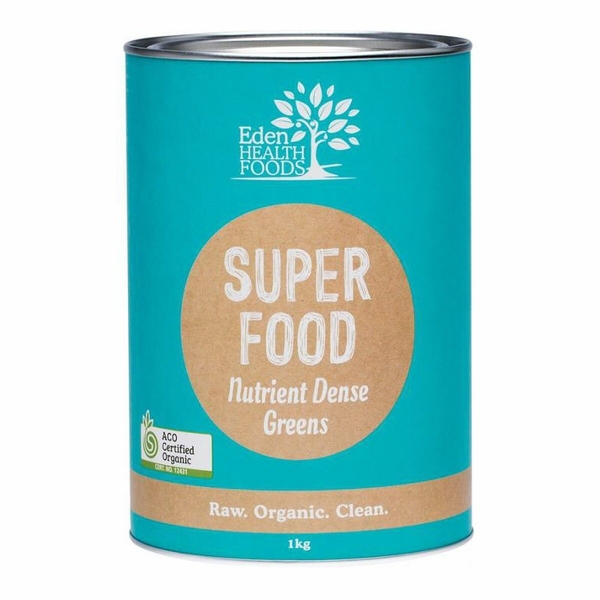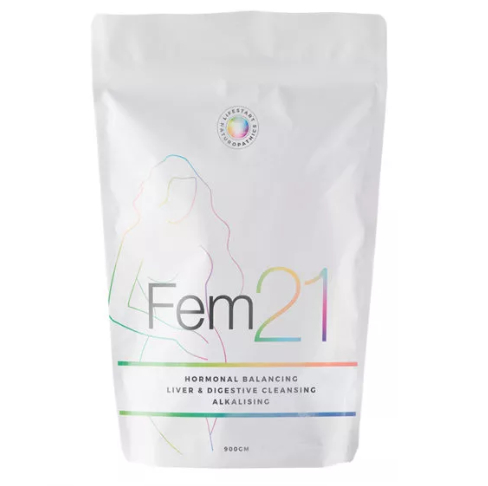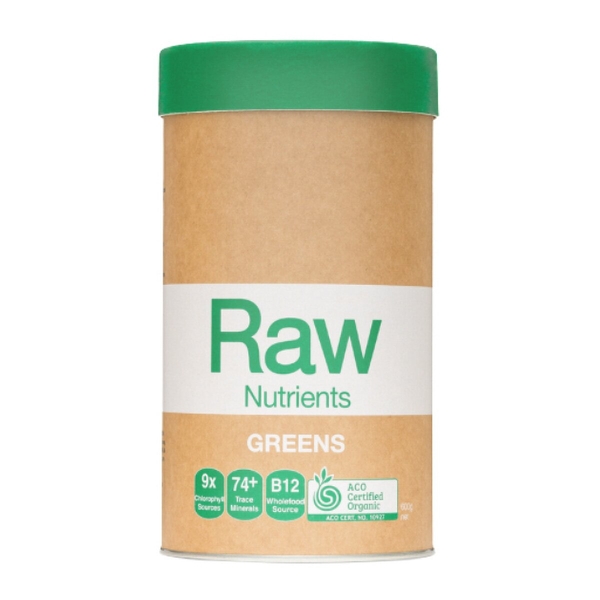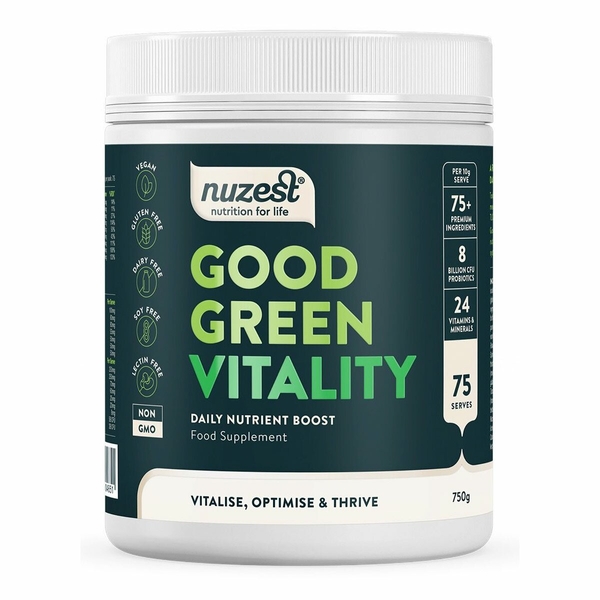
Barley
Scientific names: Hordeum vulgare, Hordeum distychum
Family: Poaceae/Gramineae
Alternate names: Barley Beta-Glucan, Barley Bran, Barley Grass, Barley Malt, Glucane d'Orge, Cebada, Cereal Fiber, Dietary Fiber, Fibre Alimentaire, Fibre de Céréale, Green Barley, Green Barley Grass, Herbe d'Orge, Herbe d'Orge Verte, Hordeum, Hordeum Distichon, Mai Ya, Malt d'Orge, Malt d'Orge Germée, Mugicha, Orge, Orge Germée, Orge Perlé, Orge Mondé, Pearl Barley, Pot Barley, Roasted Barley Extract, Scotch Barley, Son d'Orge, Sprouted Barley, Sprouted Barley Malt, Young Green Barley
Actions: Anticarcinogenic, Antihypertensive, Cholesterol, Gastrointestinal, Glycemic/insulinemic, Metabolic, Sympathomimetic
Background
Barley (Hordeum vulgare) is a common grain that is high in fiber. It's consumed in foods and used to brew alcoholic beverages worldwide.
The fiber in barley might lower cholesterol, blood sugar, and insulin levels. It also seems to slow stomach emptying which could keep blood sugar stable and help to control appetite.
People use barley for heart disease and high cholesterol. It is also used for colon cancer, diabetes, diarrhea, high blood pressure, obesity, and many other conditions, but there is no good scientific evidence to support these uses.
The fiber in barley might lower cholesterol, blood sugar, and insulin levels. It also seems to slow stomach emptying which could keep blood sugar stable and help to control appetite.
People use barley for heart disease and high cholesterol. It is also used for colon cancer, diabetes, diarrhea, high blood pressure, obesity, and many other conditions, but there is no good scientific evidence to support these uses.
Safety Safety definitions
When taken by mouth: Barley is commonly consumed in foods. But there isn't enough reliable information to know if it is safe to use in larger amounts as medicine. Side effects might include gas, bloating, and an unpleasant taste. Some people might also be allergic to barley.
When applied to the skin: There isn't enough reliable information to know if barley is safe. Allergic skin reactions are possible.
Breast-feeding: Barley is commonly consumed in foods. But there isn't enough reliable information to know if it is safe to use in larger amounts as medicine while breast-feeding. Stay on the safe side and stick to food amounts.
Celiac disease or gluten sensitivity: The gluten in barley can make celiac disease worse. Avoid using barley.
Allergies to cereal grains: Consuming barley might cause an allergic reaction in people who are sensitive to other cereal grains, including rye, wheat, oat, corn and rice. An allergic reaction is also possible in people allergic to grass.
When applied to the skin: There isn't enough reliable information to know if barley is safe. Allergic skin reactions are possible.
Special Precautions & Warnings:
Pregnancy: Barley is commonly consumed in foods. But there isn't enough reliable information to know if it is safe to use in larger amounts as medicine while pregnant. Barley sprouts are possibly unsafe and should not be eaten in high amounts during pregnancy.Breast-feeding: Barley is commonly consumed in foods. But there isn't enough reliable information to know if it is safe to use in larger amounts as medicine while breast-feeding. Stay on the safe side and stick to food amounts.
Celiac disease or gluten sensitivity: The gluten in barley can make celiac disease worse. Avoid using barley.
Allergies to cereal grains: Consuming barley might cause an allergic reaction in people who are sensitive to other cereal grains, including rye, wheat, oat, corn and rice. An allergic reaction is also possible in people allergic to grass.
Effectiveness
NatMed Pro rates effectiveness based on scientific evidence according to the following scale: Effective, Likely Effective, Possibly Effective, Possibly Ineffective, Likely Ineffective, Ineffective, and Insufficient Evidence to Rate.
Likely effective Effectiveness definitions
- Heart disease. Eating 3.6 grams of barley daily as a source of dietary fiber seems to reduce the risk of heart disease.
- High cholesterol. Eating 3-12 grams of barley daily seems to reduce total and low-density lipoprotein (LDL or "bad") cholesterol in adults with high cholesterol.
Possibly ineffective Effectiveness definitions
- Colon cancer, rectal cancer. Eating more barley as a source of fiber doesn't seem to lower the risk of developing colon or rectal cancer.
Dosing & administration
Barley is commonly consumed in foods. As medicine, there isn't enough reliable information to know what an appropriate dose of barley might be. Keep in mind that natural products are not always necessarily safe and dosages can be important. Be sure to follow relevant directions on product labels and consult a healthcare professional before using.
Interactions with pharmaceuticals
Triclabendazole (Egaten)
Interaction Rating=Moderate Be cautious with this combination.
Barley seems to reduce the amount of triclabendazole that the body can absorb and use. But it's not clear if this is a big concern. Until more is known, people taking triclabendazole should use barley with caution.
Interactions with herbs & supplements
There are no known interactions with herbs and supplements.
Interactions with foods
There are no known interactions with foods.
Products
View all productsPer capsule:
- Hordeum vulgare (Shen Qu) ext. 35.82 mg
- Crataegus pinnatifida ext. 53.73 mg
- Citrus aurantium ext. 29.85 mg
- Poria cocos ext. 35.82 mg
- Atractylodes macrocephala ext. 29.85 mg
- Pinellia ternata ext. 29.85 mg
- Raphanus sativus ext. 29.85 mg
- Forsythia suspensa ext. 17.91 mg
- Citrus reticulata ext. 17.91 mg
- Amomum villosum ext. 17.91 mg
Practitioner product
RRP: $32.50$27.63Save: 15%
Create account
RRP: $32.67$27.77Save: 15%
Create account
RRP: $59.95$50.96Save: 15%
Create account
RRP: $32.67$27.77Save: 15%
Create account
Per 7 g:
- Hordeum vulgare (Barley) 883 mg
- Arthrospira platensis (Spirulina) 643 mg
- Brassica oleracea var. italica powder 100 mg
- Silybum marianum ext. 500 mg
- Schisandra chinensis ext. 200 mg
- Cynara scolymus ext. 800 mg
- Chlorella pyrenoidosa powder 100 mg
- Rosmarinus officinalis ext. 50 mg
- Coriandrum sativum powder 50 mg
- Galium aparine ext. 160 mg
- L-glutamine 800 mg
- Trimethylglycine (TMG) 300 mg
- Methylsulfonylmethane (MSM) 100 mg
- Calcium D-glucarate 100 mg
- Taurine 60 mg
- L-cysteine 50 mg
- Ascorbic acid (Vitamin C) 80 mg
- Magnesium citrate 8 mg
- Zinc citrate 5 mg
- R-alpha lipoic acid 25 mg
- Apple pectin 320 mg
- Natural lemon lime flavour
- Xylitol
- Glycine
- Stevia rebaubiana
- Citric acid anhydrous
Practitioner product
Per 5 g:
- Hordeum vulgare (Barley) 870 mg
- Arthrospira platensis (Spirulina) 1.24 g
- Wheatgrass powder 870 mg
- Chlorella pyrenoidosa powder 250 mg
- Brassica oleracea var. acephala (leaf) powder (Kale) 870 mg
- Brassica oleracea var. italica (Broccoli) 870 mg
- Stevia rebaubiana
- Luo Han Guo (fruit) ext. (Monk fruit)
- Thaumatin
RRP: $31.31$20.35Save: 35%
Create account
Per 3 g:
- Hordeum vulgare (Barley) powder 750 mg
- Arthrospira platensis (Spirulina) 750 mg
- Chlorella pyrenoidosa powder 750 mg
- Wheatgrass powder 450 mg
- Calcified lithothamnion (Red algae) 300 mg
RRP: $159.22$135.34Save: 15%
Create account
Per 6 g (Green Apple):
- Hordeum vulgare (leaf) powder (Barley) 654 mg
- Green banana starch 654 mg
- Wheatgrass powder 654 mg
- Green lentil
- Mung bean (sprout)
- Spinacia oleracea
- Acacia sp. 1.99 g
- Bacillus subtilis 1 billion CFU
- Brassica oleracea var. acephala (leaf) powder (Kale)
- Cucurbita pepo (seed)
- Linseed
- Chia (seed)
- Cynara scolymus
- Taraxacum officinale (root)
- Petroselinum crispum
- Chlorella vulgaris 450 mg
- Apple flavour
- Citric acid anhydrous
- Siraitia grosvenorii (Monk fruit)
- Agave sp.
- Arthrospira platensis (Spirulina) 228 mg
RRP: $35.95$30.56Save: 15%
Create account
Per capsule:
- Hordeum vulgare (Barley) powder 550 mg
- Arthrospira platensis (Spirulina) 550 mg
- Chlorella pyrenoidosa powder 550 mg
- Wheatgrass powder 330 mg
- Calcified lithothamnion (Red algae) 220 mg
RRP: $74.14$63.02Save: 15%
Create account
Per 10 g:
- Hordeum vulgare (Barley) 200 mg
- Arthrospira platensis (Spirulina) 1 g
- Chlorella pyrenoidosa powder 333 mg
- Wheatgrass powder 333 mg
- Inulin (Dietary fibre) 800 mg
- Lactobacillus acidophilus 5 billion CFU
- Bifidobacterium bifidum 3 billion CFU
- Bifidobacterium lactis 5 billion CFU
- Bifidobacterium longum 1 billion CFU
- Cynara scolymus powder 500 mg
- Malus (Apple) 200 mg
- Brassica oleracea var. acephala (leaf & sprout) powder (Kale) 100 mg
- Ananas comosus (Pineapple) 240 mg
- Spinacia oleracea (Spinach) 67 mg
- Beta glucan 50 mg
- Resveratrol 10 mg
- Ananas comosus (Pineapple oil) 65 mg
- Linum usitatissimum (seed) (Flaxseed) 400 mg
- Oryza sativa (Rice bran) 500 mg
- Pea protein isolate 1 g
- R-alpha lipoic acid 67 mg
- Thiamine hydrochloride (Vitamin B1) 400 µg
- Niacinamide (Vitamin B3) 5.3 mg
- Pyridoxine hydrochloride (Vitamin B6) 567 µg
- Riboflavin (Vitamin B2) 434 µg
- Pantothenic acid (Vitamin B5) 1.7 mg
- Cyanocobalamin (Vitamin B12) 0.8 µg
- Ergocalciferol (Vitamin D) 3.8 µg
- Ascorbic acid (Vitamin C) 333 mg
- d-alpha-Tocopheryl acid succinate 100 mg
- Ubidecarenone (Coenzyme Q10) 8 mg
- Copper gluconate 225 µg
- Potassium phosphate dibasic 104 mg
- Folic acid 67 µg
- Biotin 10 µg
- Silica - colloidal anhydrous 14 mg
- Magnesium citrate 42 mg
- Zinc amino acid chelate 10 mg
- Chromium picolinate 10 µg
- Calcium citrate 132 mg
- Manganese amino acid chelate 1.4 mg
- Selenomethionine 30 µg
- Beta-carotene carotenoids (Vitamin A) 1.7 mg
- Citrus bioflavonoids extract 500 mg
- Citric acid anhydrous 150 mg
- Rosmarinus officinalis powder 68 mg
- Taraxacum officinale ext. 33 mg
- Vaccinium myrtillus powder 200 mg
- Glycyrrhiza glabra powder 67 mg
- Crataegus monogyna ext. 29 mg
- Astragalus membranaceus ext. 67 mg
- Vitis vinifera ext. 67 mg
- Camellia sinensis ext. 67 mg
- Ganoderma lucidum powder 21 mg
- Lentinula edodes powder 21 mg
- Aloe barbadensis ext. 500 mg
- Zingiber officinale powder 67 mg
- Eleutherococcus senticosus ext. 1 g
- Centella asiatica ext. 67 mg
- Withania somnifera ext. 67 mg
- Silybum marianum ext. 67 mg
- Arctium lappa ext. 21 mg
- Rosa canina powder 168 mg
- Lycium barbarum 33 mg
- Beta vulgaris (root) powder (Beetroot) 167 mg
- Daucus carota powder (Carrot) 83 mg
- Carica papaya (Papain) 250 mg
- Lecithin 725 mg
- Laminaria digitara (Kelp) 8 mg
- Natural vanilla flavour
- Natural pineapple flavour
- Thaumatin
- Stevia rebaubiana
- Luo Han Guo (fruit) ext. (Monk fruit)
- Xanthan gum
- Brassica oleracea var. italica powder 150 mg
- Malpighia glabra ext. 267 mg
- Theobroma cacao powder 100 mg
1 kg
RRP: $247.01$160.56Save: 35%
Create account
Per 5 g:
- Hordeum vulgare (Barley) powder 200 mg
- Inulin (Dietary fibre)
- Marine collagen peptides 250 mg
- Lepidium meyenii (root) powder
- Lactobacillus rhamnosus (LR-32)
- Bifidobacterium longum (BL-05)
- Zinc
- Cannabis sativa powder 520 mg
- Arthrospira platensis (Spirulina) 370 mg
- Linum usitatissimum (seed) flour (Flaxseed) 250 mg
- Wheatgrass powder
- Sunflower lecithin
- Citrus limon (juice) (Lemon)
- Ananas comosus (Pineapple)
- Ascorbic acid (Vitamin C)
- Euterpe oleracea (berry) ext. (Acai)
- Chlorella pyrenoidosa powder
- Lycopersicon esculentum (Tomato)
- Apple pectin
- Beta vulgaris (root) powder (Beetroot)
- Citric acid anhydrous
- Citrullus lanatus (Watermelon)
- Fragaria ananassa (juice) powder (Strawberry)
- Garcinia mangostana (fruit) powder
- Punica granatum juice dry
- Carica papaya (fruit) powder
- Vaccinium macrocarpon (fruit) powder
- Natural vanilla flavour
- Lycium barbarum (fruit)
- Aristotelia chilensis (Maqui berry)
- Silybum marianum powder
- Astragalus membranaceus (root) powder
- Equisetum arvense (herb) powder
- Laminaria digitara (Kelp)
- Silica - colloidal anhydrous
- Daucus carota powder (Carrot)
- Camellia sinensis powder
- Withania somnifera (root) powder
- Eleutherococcus senticosus (root) powder
- Echinacea purpurea (root) powder
- Melissa officinalis powder
- Taraxacum officinale (leaf) powder
- Zingiber officinale (root) powder
- Rosa canina powder
- Vaccinium myrtillus (fruit) powder
- Ulmus rubra (bark) powder
- Mushroom powder
- Kakadu plum powder
- Calcium pantothenate (Vitamin B5)
- Panax ginseng powder
- Curcuma longa (root) powder
- Backhousia citriodora (leaf)
- Thaumatin
- Ananas comosus (Bromelain)
- Protease
- Phyllanthus emblica (fruit) powder
- Morindae officinalis (fruit) powder
- Marine algae
- Malpighia glabra (fruit) powder
- Medicago sativa 200 mg
- Sambucus nigra (fruit)
- Vaccinium corymbosum (fruit) powder
- Salvia hispanica (seed) powder
RRP: $39.95$33.96Save: 15%
Create account
Per 15 g (Rich Chocolate):
- Hordeum vulgare (Barley) 100 mg
- Pea protein isolate 8.3 g
- Lactobacillus acidophilus 1.58 billion CFU
- Bifidobacterium bifidum 1.58 billion CFU
- Marine algae 500 mg
- Linum usitatissimum (seed) (Flaxseed) 250 mg
- Sunflower lecithin 200 mg
- Spinacia oleracea (Spinach) 100 mg
- Beta vulgaris (root) powder (Beetroot) 100 mg
- Daucus carota powder (Carrot) 100 mg
- Arthrospira platensis (Spirulina) 100 mg
- Wheatgrass powder 100 mg
- Zingiber officinale powder 40 mg
- Ribes nigrum powder 200 mg
- Vitis vinifera powder 200 mg
- Malpighia glabra powder 100 mg
- Lycium chinese powder 100 mg
- Vaccinium myrtillus powder 100 mg
- Bacopa monnieri powder 50 mg
- Taraxacum officinale powder 30 mg
- Malus (fibre) powder (Apple) 587 g
- Apple pectin 200 mg
- Plantago ovata (husk) (Psyllium) 100 mg
- Citric acid anhydrous 150 mg
- Citrus bioflavonoids extract 70 mg
- Ananas comosus (Bromelain) 30 mg
- R,S-alpha lipoic acid 20 mg
- Beta glucan 11.5 mg
- Dunaliella salina 8 mg
- Lutein 2 mg
- Zeaxanthin (Carotenoids) 400 µg
- Natural chocolate flavour
- Potassium phosphate dibasic
- Calcium citrate
- Ascorbic acid (Vitamin C)
- Zinc gluconate
- d-alpha-Tocopheryl acid succinate (Vitamin E)
- Thaumatin
- Nicotinamide (Vitamin B3)
- Manganese gluconate
- D-calcium pantothenate (Vitamin B5)
- Tocopherols concentrate - mixed (Vitamin E)
- Selenomethionine
- Retinyl palmitate
- Riboflavin (Vitamin B2)
- Thiamine hydrochloride (Vitamin B1)
- Pyridoxine hydrochloride (Vitamin B6)
- Folate
- Chromium picolinate
- Cholecalciferol
- Fucus vesiculosus powder 97 mg
- Stevia rebaubiana powder
- Phytomenadione (Vitamin K1)
- Copper gluconate
- Calendula officinalis powder
- Biotin
- Cyanocobalamin (Vitamin B12)
- Theobroma cacao powder 2.1 g
- Brassica oleracea var. italica powder 100 mg
- Carica papaya 50 mg
- Natural vanilla flavour
- Magnesium gluconate
- Menaquinone 7 (Vitamin K2)
RRP: $48.00$40.80Save: 15%
Create account
RRP: $33.50$28.48Save: 15%
Create account
Per 4 g (Mango Passionfruit):
- Hordeum vulgare (Barley) 15 mg
- L-tyrosine 500 mg
- Acetyl L-carnitine (Acetyl-L-carnitine)
- Camellia sinensis
- Ascorbic acid (Vitamin C)
- Theobroma cacao powder 40 mg
- Pyridoxal 5-phosphate (P5P)
- Stevia rebaubiana
- Piper nigrum 5 mg
- Folate
- Methylcobalamin (Activated B12) 5 µg
- Gamma-Butyrobetaine (GBB) 15 mg
- Coffea arabica equiv. caffeine 150 mg
- Alpinia galanga powder 150 mg
- Orthosilicic acid (Silica)
- Citric acid anhydrous
- Xanthan gum
- Chromium picolinate
- Natural flavours
RRP: $59.95$53.96Save: 10%
Create account
RRP: $169.95$161.45Save: 5%
Create account
Per 10 g:
- Hordeum vulgare (Barley) (leaf) powder
- Wheatgrass powder
- Brassica oleracea var. italica (Broccoli)
- Plantago ovata (husk) (Psyllium)
- Citrus limon (Lemon)
- Fucus vesiculosus
- Zingiber officinale
- Actaea racemosa
- Rosmarinus officinalis
- Silybum marianum
- Glycyrrhiza glabra
- Vitex agnus-castus (fruit)
- Eleutherococcus senticosus
- Taraxacum officinale
- Stevia rebaubiana
- Lactobacillus acidophilus
- Cinnamon zeylanicum (bark)
- Punica granatum
- Rubus idaeus
- Lactobacillus reuteri
- Bacillus coagulans (MTCC 5260)
- Green banana
- Centella asiatica
- Fructooligosaccharides
RRP: $171.80$137.43Save: 20%
Create account
Per 5 g:
- Hordeum vulgare (Barley) (sprout) powder
- Green banana starch
- Larix spp. powder
- Myristica fragrans (Nutmeg)
- Malus domestica (peel) ext. (Apple)
- Brassica oleracea var. acephala (leaf & sprout) powder (Kale)
- Euterpe oleracea (berry) ext. (Acai)
- Oryza sativa (Rice)
- Cinnamomum verum (bark) powder
- Schisandra chinensis (berry) powder
- Rosmarinus officinalis (leaf) powder
- Zingiber officinale (root) powder
- Stevia rebaubiana
- Vaccinium macrocarpon powder
- Brassica oleracea var. italica (sprout) powder
- Punica granatum (peel) powder
- Glucosamine hydrochloride
- Hibiscus sabdariffa (flower) powder
- Prunus serotina (fruit) ext. (Black cherry)
- Punica granatum (fruit pericarp) powder
- Raphanus sativus (fruit) powder
- Theobroma cacao (seed) powder
RRP: $59.95$53.96Save: 10%
Create account
Per 5 g:
- Hordeum vulgare (Barley) (leaf) powder
- Arthrospira platensis (Spirulina)
- Chlorella pyrenoidosa powder
- Wheatgrass powder
- Urtica dioica (leaf) powder
- Brassica oleracea var. acephala (leaf) powder (Kale)
- Spinacia oleracea (Spinach)
- Artichoke inulin
- Ananas comosus (Pineapple)
- Malus (Apple)
- Citrus limon (Lemon)
- Amaranth powder
- Quinoa (sprout) powder
- Sea mineral complex
- Taraxacum officinale ext.
- Silybum marianum ext.
- Rosmarinus officinalis ext.
- Opuntia ficus indica (cladode) (Prickly pear)
- Natural vanilla flavour
- Stevia rebaubiana (leaf) ext.
- Mint flavour
- Medicago sativa
- Brassica oleracea var. italica (sprout) powder
RRP: $134.95$107.95Save: 20%
Create account
Per 10 g:
- Hordeum vulgare (Barley)
- Pea protein isolate
- Malus (Apple)
- Apple pectin
- Arthrospira platensis (Spirulina)
- Linum usitatissimum (seed) (Flaxseed)
- Sunflower lecithin
- Marine algae
- Wheatgrass powder
- Beta vulgaris (root) powder (Beetroot)
- Brassica oleracea var. italica (Broccoli)
- Chlorella pyrenoidosa powder
- Spinacia oleracea (Spinach)
- Daucus carota powder (Carrot)
- Zingiber officinale
- Glycyrrhiza glabra (root)
- Cynara scolymus
- Ribes nigrum
- Vitis vinifera
- Malpighia glabra
- Vaccinium myrtillus
- Camellia sinensis
- Rosa canina
- Centella asiatica
- Silybum marianum
- Rhodiola rosea
- Rosmarinus officinalis
- Withania somnifera
- Taraxacum officinale
- Lycium chinese (berry)
- Citric acid anhydrous
- Citrus bioflavonoids extract
- R,S-alpha lipoic acid
- Beta glucan
- Ubiquinol-10 (Coenzyme Q10)
- Dunaliella salina
- Lactobacillus acidophilus
- Bifidobacterium bifidum
- Potassium phosphate dibasic
- Magnesium citrate
- Ascorbic acid (Vitamin C)
- Natural vanilla flavour
- Natural pineapple flavour
- Zinc citrate
- Tocopherols concentrate - mixed (Vitamin E)
- Selenomethionine
- D-calcium pantothenate (Vitamin B5)
- Nicotinamide (Vitamin B3)
- Pyridoxine hydrochloride (Vitamin B6)
- Retinyl palmitate
- Cholecalciferol
- Copper gluconate
- Thiamine hydrochloride (Vitamin B1)
- Riboflavin (Vitamin B2)
- Folate
- Chromium picolinate
- Panax ginseng
- Fucus vesiculosus
- Stevia rebaubiana (leaf)
- Phytomenadione (Vitamin K1)
- Biotin
- Cyanocobalamin (Vitamin B12)
- Lentinula edodes (fruiting body)
- Ulmus rubra (bark inner) powder
- Plantago ovata (husk) (Psyllium)
- Theobroma cacao
- Tocopherols concentrate - mixed (Vitamin E)
- Astragalus membranaceus
- Manganese gluconate
- Menaquinone 7 (Vitamin K2)
- Fallopia japonica
- Amylase enzyme
- Protease
- Lipase
- Cellulase
- Lactase
- Euterpe oleracea (berry) ext. (Acai)
- Bacopa monnieri
- Salvia officinalis
- Vaccinium macrocarpon
RRP: $215.00$172.00Save: 20%
Create account
vital.ly has licensed monographs from TRC Healthcare.
This monograph was last reviewed on 17/06/2024 10:00:00 and last updated on 20/10/2020 01:03:51. Monographs are reviewed and/or updated multiple times per month and at least once per year.
Natural Medicines disclaims any responsibility related to medical consequences of using any medical product. Effort is made to ensure that the information contained in this monograph is accurate at the time it was published. Consumers and medical professionals who consult this monograph are cautioned that any medical or product related decision is the sole responsibility of the consumer and/or the health care professional. A legal License Agreement sets limitations on downloading, storing, or printing content from this Database. No reproduction of this monograph or any content from this Database is permitted without written permission from the publisher. It is unlawful to download, store, or distribute content from this site.


